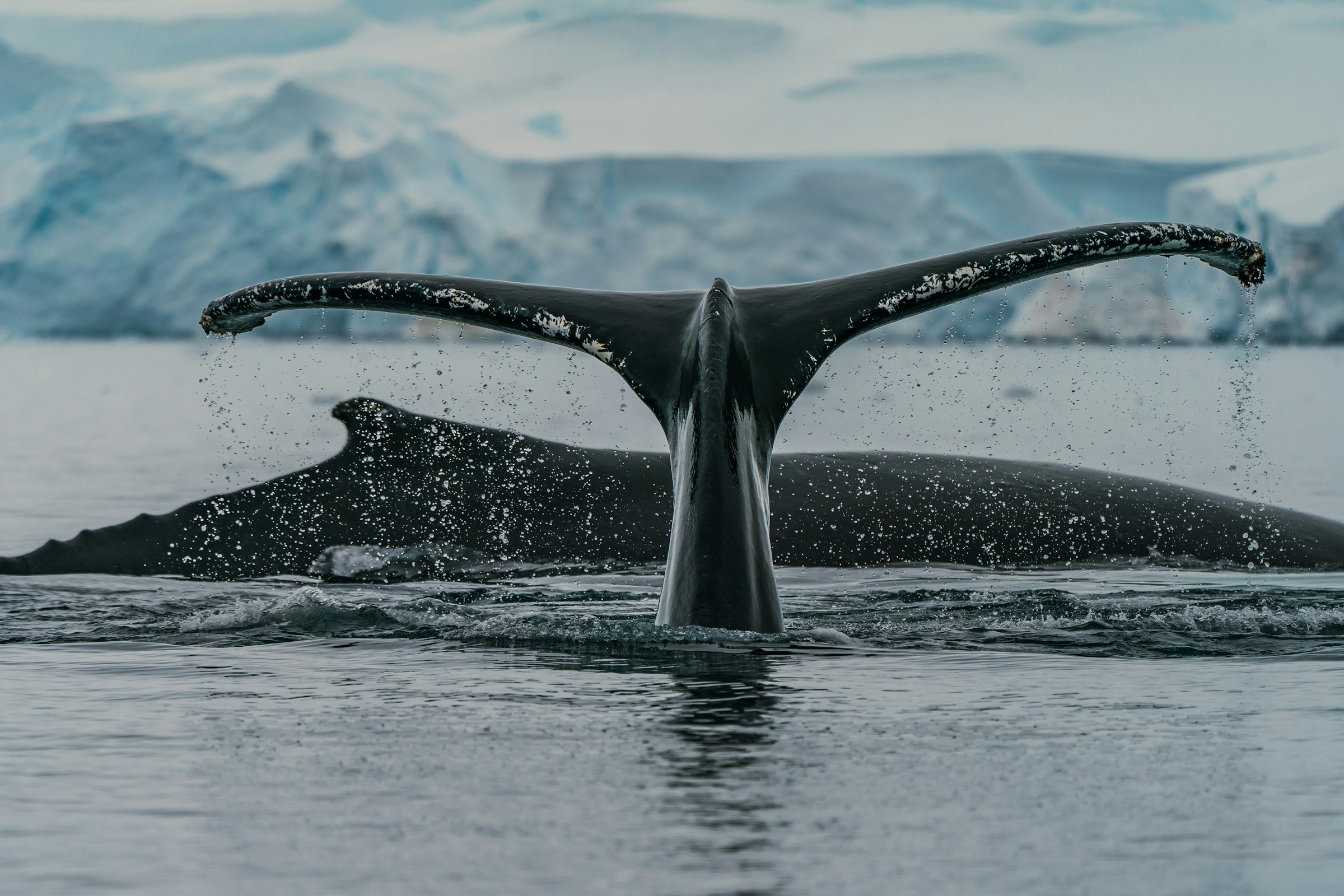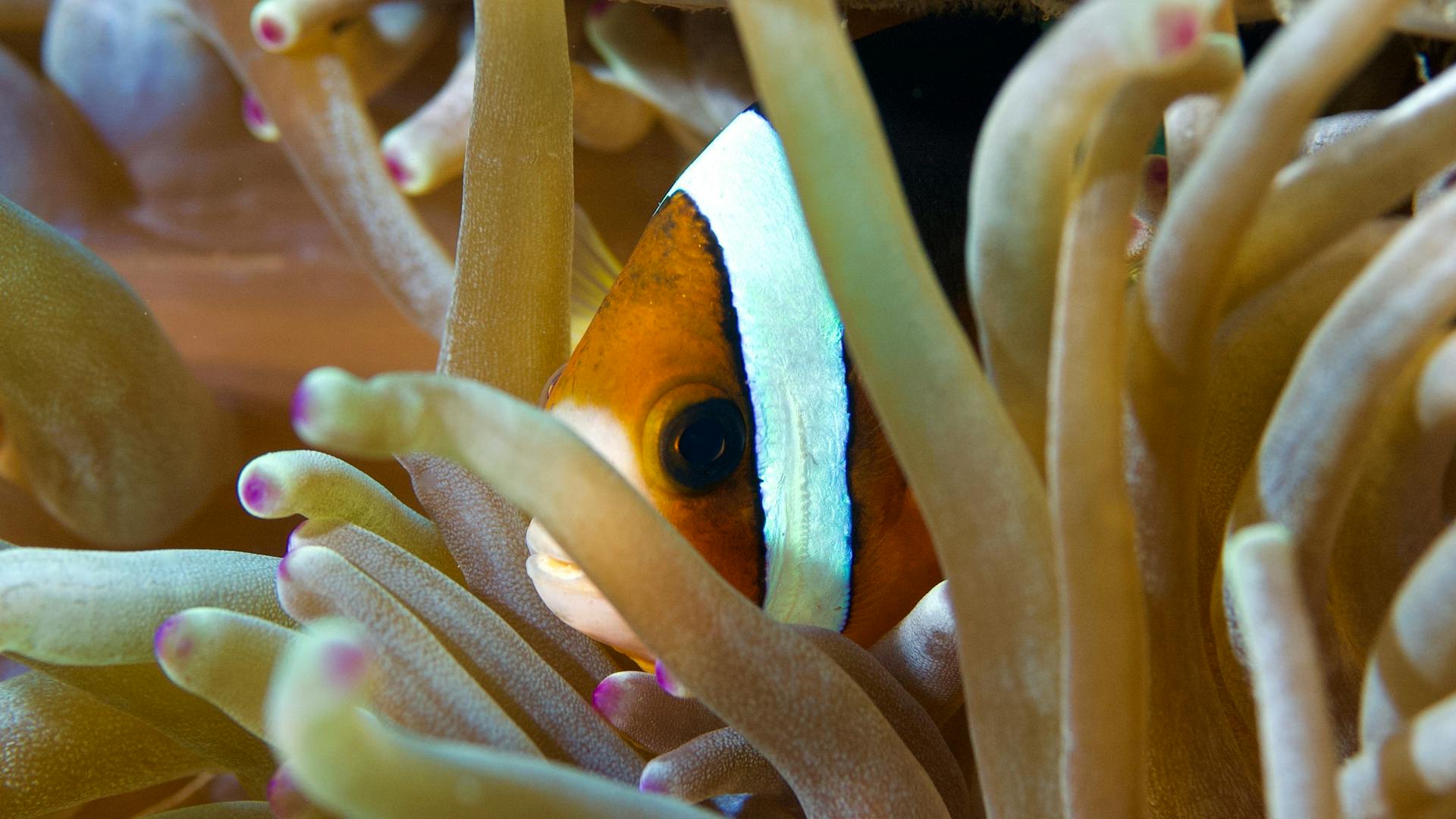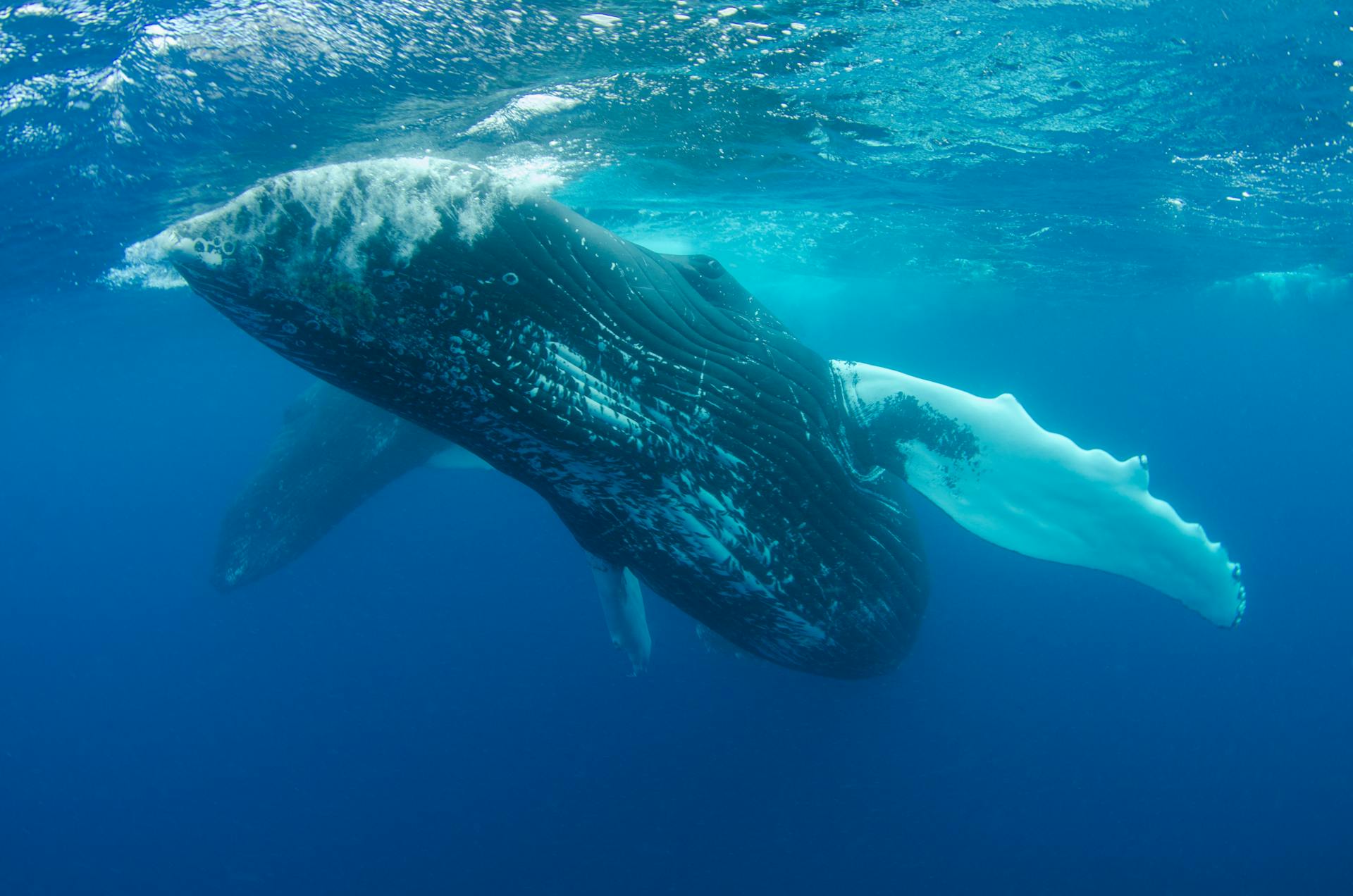Imagine a creature so majestic that it seems to glide effortlessly through the vast, open oceans—a true marvel of nature’s design. The humpback whale, with its enormous size and acrobatic displays, captivates anyone fortunate enough to witness its graceful movements. But beneath the surface of this awe-inspiring species lies a wealth of fascinating behaviors, unique adaptations, and vital ecological roles that make humpback whales one of the most studied marine mammals in the world.
Humpback whales, with their iconic breaches and haunting songs, are among the most recognizable marine mammals on the planet. These gentle giants travel thousands of miles each year, crossing oceans and revealing the mysteries of the deep in ways few other species can match. Studying humpback whales is not only essential for understanding the complexities of marine ecosystems, but it also holds the key to ensuring the survival of countless species, including our own. In this article, we will dive into the physical characteristics, habitats, feeding behaviors, social dynamics, and conservation efforts that shape the life of the humpback whale. Join us as we explore the fascinating world of one of nature’s most majestic creatures.
Physical Characteristics
Humpback whales are among the largest creatures to ever inhabit our planet, reaching lengths of up to 60 feet (18 meters) and weighing as much as 40 tons. Despite their immense size, these whales are known for their surprising agility, often performing acrobatic feats like breaching and tail-slapping. Their body shape is sleek yet robust, with a broad, curved back and long pectoral fins that can stretch up to one-third of their body length. These large fins, combined with their wide tail flukes, enable humpbacks to navigate through the ocean with incredible precision.
Another striking feature of humpback whales is their unique pigmentation and markings. Each whale has a distinctive pattern of light and dark patches on its underside, especially around the tail and flippers, much like a human fingerprint. These markings are used to identify individual whales and are valuable for researchers tracking their movements. Their skin can range from dark gray to black, often with lighter patches on the underside, and some even display white markings on their dorsal fins. These traits make humpback whales not only fascinating to study but also visually spectacular.
Habitat and Distribution
Humpback whales are found in oceans across the globe, from the Arctic and Antarctic to tropical waters, though their populations tend to be concentrated in specific regions. They are highly migratory animals, traveling up to 16,000 miles annually between their feeding grounds in colder waters and their breeding grounds in warmer, tropical regions. In the summer months, humpbacks thrive in nutrient-rich waters, particularly in the North Pacific, North Atlantic, and Southern Ocean. As winter approaches, they embark on long migrations to tropical and subtropical waters off the coasts of places like Hawaii, the Caribbean, and coastal Africa to breed.
Their migration patterns are influenced by the availability of food and the need for warmer waters for calf development. During these migrations, humpbacks rely on protected bays or coastal waters for breeding and calving. These seasonal movements are a marvel of nature, showcasing the whale’s incredible endurance and navigation abilities.
Diet and Feeding Behavior
Humpback whales are baleen whales, meaning they filter feed using comb-like plates in their mouths called baleen. They primarily feed on small fish, krill, and plankton, often in massive quantities. During the summer feeding season, humpbacks can consume up to 4,000 pounds of food per day to prepare for the long migration ahead. Their feeding techniques are nothing short of spectacular. One of the most well-known methods is bubble-net feeding, where a group of humpbacks works together to create a “net” of bubbles that traps schools of fish or krill. The whales then lunge through the bubble cloud, mouths open wide, to consume the concentrated prey.
This sophisticated method of feeding highlights the humpback whale’s role in marine ecosystems as a key predator in the ocean’s food chain. By feeding on large quantities of krill and small fish, they help regulate the populations of these organisms, which in turn maintains the balance of the ecosystem.
Social Structure and Behavior
Humpback whales are known for their complex social structure. While they are often seen alone or in small groups, they are also capable of forming larger pods, particularly during migrations or when feeding. Social bonds are established through shared behaviors such as synchronized swimming, vocalizations, and mutual aid in feeding. Within these groups, there is a loose hierarchy, with younger whales often learning behaviors from older, more experienced individuals.
Communication is a vital aspect of humpback whale society. They are famous for their long, haunting songs, which are primarily sung by males during the breeding season. These songs can travel for miles and are believed to play a role in attracting mates, though some researchers suggest they may also help with navigation or social bonding. Humpback whales also communicate through other vocalizations, including grunts, moans, and slaps of their tails or flippers, which may signal aggression, excitement, or other emotions.
In terms of reproduction, humpback whales are polygamous, with males competing for the attention of females. Mating typically occurs in warmer waters, with males often engaging in intense battles to win over females. Calving occurs after a gestation period of about 11 months, and mothers nurse their calves for up to a year, providing them with essential nutrients for survival.
Conservation Status
The humpback whale has faced numerous threats over the centuries, primarily from commercial whaling. By the mid-20th century, their populations had been decimated, and many humpback whale populations were near extinction. However, with the global moratorium on whaling introduced by the International Whaling Commission (IWC) in 1982, their numbers have begun to recover. Today, humpback whales are classified as least concern by the International Union for Conservation of Nature (IUCN), though some populations remain endangered.
Despite this positive trend, humpbacks still face several threats, including climate change, which affects the availability of their food sources, and ocean pollution, such as plastic waste, ship strikes, and entanglement in fishing gear. Conservation efforts have been crucial to their recovery, with initiatives aimed at protecting breeding grounds, reducing human impacts, and ensuring sustainable marine environments. Ongoing international cooperation is vital to ensure that humpback whales continue to thrive.
Fun Facts and Myths
Humpback whales are not only scientifically intriguing but also full of surprises. One of their most famous behaviors is breaching, where they leap out of the water, often landing with a dramatic splash. It is believed that breaching serves multiple purposes, from communication and removing parasites to simply displaying strength and playfulness. Another striking behavior is the tail slap, where humpbacks smack their tails on the water’s surface, possibly to communicate with other whales or as a way to stun prey.
Cultural references to humpback whales are widespread, often symbolizing majesty, mystery, and freedom. In various myths and stories across cultures, these whales are seen as symbols of wisdom and resilience. However, some misconceptions surround them, such as the idea that they are solitary creatures; in reality, they form strong social bonds and exhibit remarkable cooperative behaviors.
The Future of Humpback Whales
While the future of humpback whales is promising due to successful conservation efforts, much work remains to be done. Ongoing research is vital to better understand their behaviors, migration patterns, and the impacts of environmental changes. Protecting their habitats, particularly from threats like climate change and human interference, will be crucial for ensuring their continued survival.
Individuals also play an important role in supporting conservation efforts. By reducing ocean pollution, advocating for policies that protect marine life, and supporting organizations working to preserve whales and their ecosystems, we can all contribute to the ongoing effort to safeguard these magnificent creatures.
Conclusion
Humpback whales are truly remarkable creatures that play a critical role in marine ecosystems. Their size, intelligence, and intricate social behaviors make them a fascinating subject of study, and their conservation is essential for the health of our oceans. As we continue to learn more about these majestic animals, it becomes increasingly clear that protecting them is not just about preserving a single species, but ensuring the overall health of our planet’s ecosystems. Let’s continue to raise awareness, support conservation efforts, and work together to protect these incredible creatures for generations to come.
Frequently Asked Questions (FAQ)
- How long do humpback whales live?
Humpback whales typically live for around 45 to 50 years, although some individuals have been known to live up to 80 years. Their life expectancy can vary depending on factors such as their environment and human-related threats. - Why do humpback whales sing?
Humpback whales are famous for their long, complex songs, which are primarily sung by males during the breeding season. These songs are believed to play a role in attracting mates, although they may also serve other purposes such as communication between individuals or marking territory. - Do humpback whales eat during their migration?
Humpback whales typically do not feed during their migration to breeding grounds. Instead, they rely on the fat stores accumulated during the feeding season in colder waters. They focus on reproduction during their time in warmer waters and return to nutrient-rich areas for feeding once the migration is over. - How fast can humpback whales swim?
Humpback whales can reach speeds of up to 16-18 miles per hour (25-30 km/h) in short bursts when threatened or while breaching. However, they generally swim at slower speeds during migrations, around 3-5 miles per hour (5-8 km/h). - What are the main threats to humpback whales?
Humpback whales face several threats, including climate change, which affects the availability of their food sources, ocean pollution (especially plastic), entanglement in fishing gear, ship strikes, and illegal whaling in some regions. Conservation efforts and international protection have helped improve their population numbers. - Are humpback whales endangered?
Humpback whales were once endangered due to commercial whaling, but their numbers have significantly recovered since the 1982 global ban on whaling. The International Union for Conservation of Nature (IUCN) currently lists them as “Least Concern,” though some populations remain endangered or threatened. - How do humpback whales communicate with each other?
Humpback whales use a variety of sounds to communicate, including songs, grunts, and calls. These vocalizations can be heard over long distances underwater. Their songs are most often sung by males, and are believed to play a role in attracting mates and possibly in social bonding. - Do humpback whales have predators?
Adult humpback whales have few natural predators, although orcas (killer whales) are known to prey on young or vulnerable individuals. Humpback whale calves are particularly at risk from orca attacks. - How do humpback whales help the ocean ecosystem?
Humpback whales play an essential role in marine ecosystems by regulating the populations of smaller fish and krill. As apex feeders, they help maintain the balance in the food chain. Additionally, their presence in the ocean helps promote the health of marine biodiversity and even contributes to the health of marine plants like phytoplankton, which play a critical role in oxygen production. - Can you see humpback whales from shore?
In certain locations, it is possible to spot humpback whales from shore, especially during their migration. Many coastal areas, particularly around Hawaii, Alaska, and the eastern coasts of the United States, offer opportunities for whale watching. For a closer look, many people choose to join whale-watching tours.


